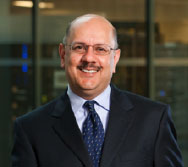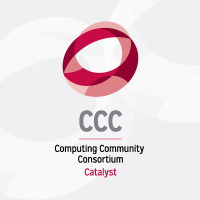Farnam Jahanian: 2015 CRA Distinguished Service Award Winner Profile

Through its Distinguished Service Award, the Computing Research Association (CRA) recognizes individuals who have made an outstanding service contribution to the computing research community. This award recognizes service in the areas of government affairs, professional societies, publications or conferences, and leadership that has a major impact on computing research. This year, the award was presented to Farnam Jahanian, who serves as Provost at Carnegie Mellon University (CMU). From 2011 to 2014, he was Assistant Director (AD) for Computer and Information Science and Engineering (CISE) at the National Science Foundation (NSF), which is considered the highest profile government position for computer science research. In 2015, Farnam was elected to the CRA Board of Directors and is currently the chair of the National Research Council’s Computer Science and Telecommunications Board.
Farnam was thrilled when he got the call in February 2015 notifying him of the award. “It is an honor to be selected for the CRA Distinguished Service Award, “he said. “This award is a reflection of the accomplishments and impact of the computer science community, whose influence is continuing to grow.”
The award recognized Farnam for his accomplishments during his time at NSF, where he was instrumental in the creation of several federal computer science initiatives, including three White House initiatives led jointly with Office of Science and Technology Policy (OSTP): the National Robotics Initiative, the Big Data Research and Development Initiative, and US Ignite.
Farnam credits collaboration as a key to success in attracting support for computer science research. He noted that “All three initiatives are interdisciplinary, and the computer science community plays a central intellectual role in each. We took activities that were already part of the community’s research agenda and articulated a vision in collaboration with the OSTP, and the result was several national initiatives.” As Tom Kalil, OSTP deputy director for Technology and Innovation, has said, “Farnam has been second to none as measured by the breadth and depth of his impact on the direction of the field, and his ability to partner effectively with the research community.”
While at the NSF, Farnam led 25 new solicitations, including several cross-directorate efforts focused on secure and trustworthy cyberspace, cyberlearning and future learning technologies, and big data. He also reintegrated the Office of Cyber Infrastructure with CISE and served as co-chair of the National Information Technology Research and Development subcommittee of the National Science and Technology Council Committee on Technology, providing overall coordination for the research and development activities of 17 government agencies.
Farnam was excited by the interdisciplinary nature of much of the work done in the CISE community. He remarked, “Computation and data-intensive approaches are core to advancing discovery in other fields. I believe that our community forms an intellectual fabric that connects nearly all other fields of inquiry. The opportunity to serve at NSF was also an opportunity to strengthen the ties between the CISE community and other science and engineering disciplines, and I made that an important part of the agenda during my tenure.”
During his tenure at NSF, Farnam found the computing community to be collaborative and enormously supportive. He remarked, “I often reached out to these colleagues for their advice and counsel, and at every turn, I found them to be eager to contribute to advancing science and engineering for our nation.” He also credits the high quality talent at NSF in both permanent staff and rotators for helping him effectively lead CISE. As he said, “The community often underestimates the enormous amount of time and effort that our public servants put into their work and the impact of their service on the science and engineering research and education.”
Farnam previously worked in academia and the private sector, and was involved in launching startups from his research. He described his service in the government as an amazing experience and very gratifying. As he said, “Before I took the position, after talking to the CISE AD search committee and visiting NSF, I realized that this could be a great opportunity to serve the community and be an advocate for the computing research community.”
In May 2015, Farnam assumed the role of provost at CMU. As the university’s chief academic officer, he has broad responsibility for leading the university’s schools, institutes and campuses and is instrumental in long-range institutional and academic planning and implementation. Prior to his service at the NSF, Jahanian was the Edward S. Davidson Collegiate Professor at the University of Michigan, where he served as chair for Computer Science and Engineering from 2007 to 2011.
Now that he has returned to academia, Farnam is able to enjoy one activity that he missed during his tenure at NSF – interacting with students and attending student-led programs.
The Computing Research Association is currently accepting nominations for the 2016 Distinguished Service Award. Nominate someone who is making a significant impact on computing today!


